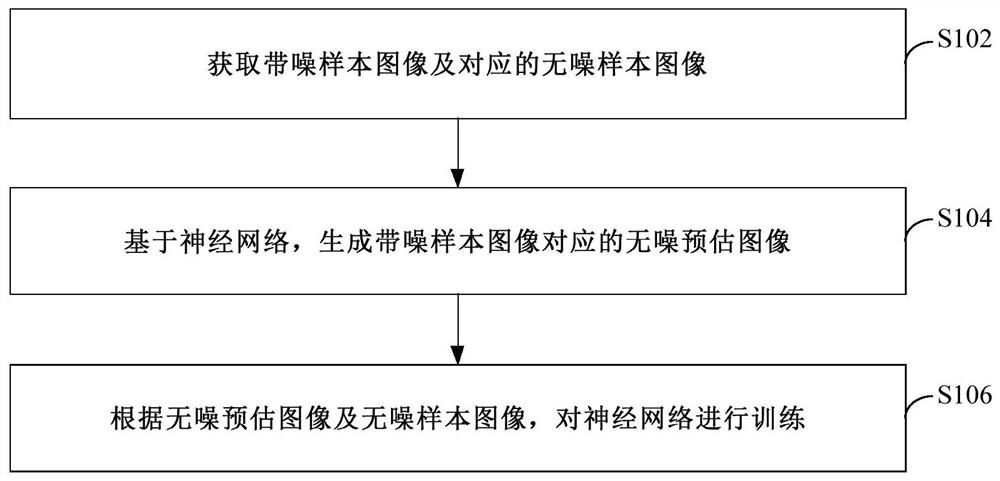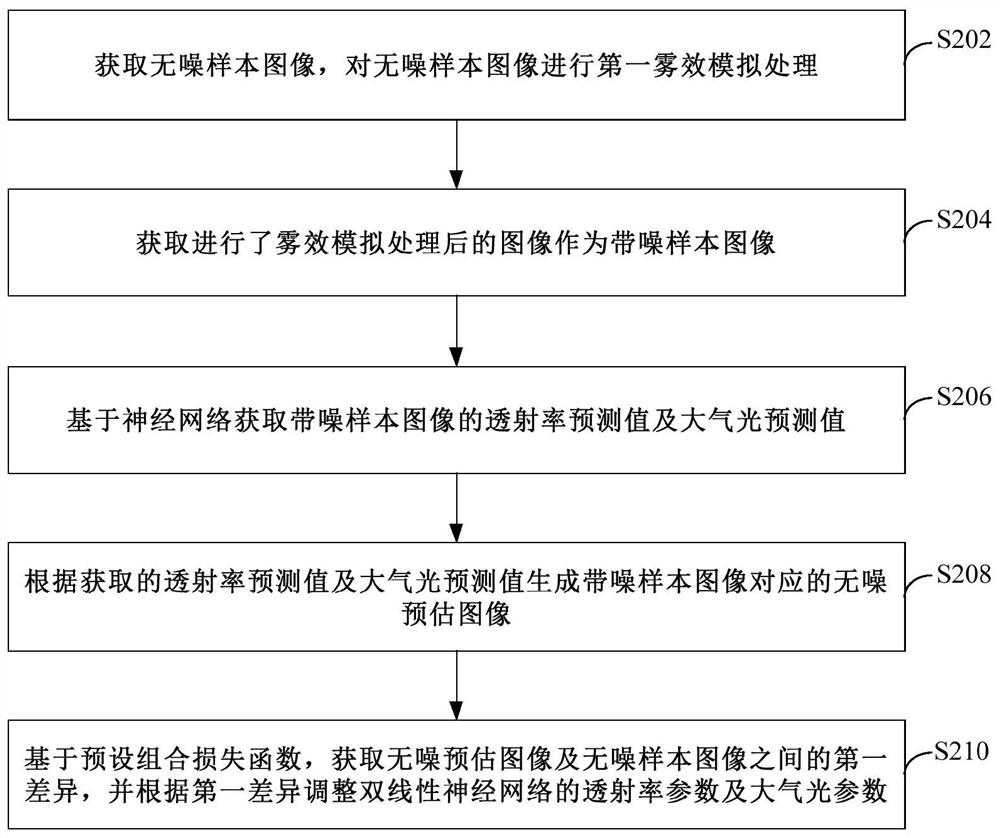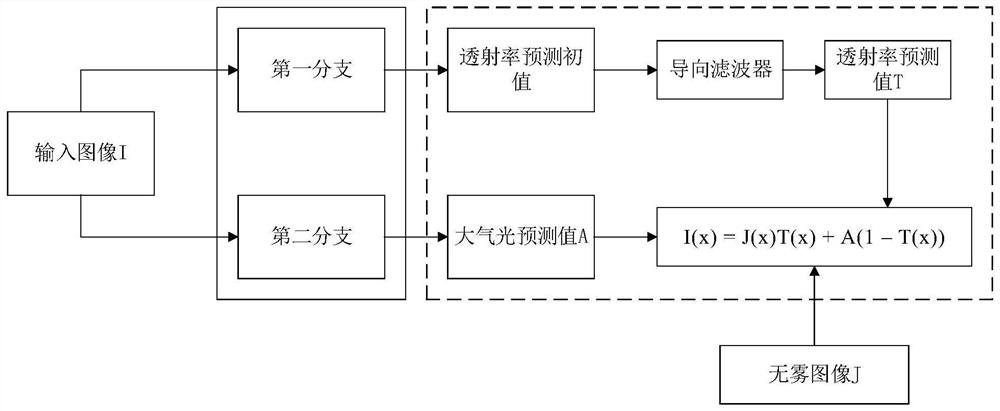Neural network training and image processing method, device, electronic device and storage medium
A neural network training and neural network technology, applied in biological neural network models, neural architecture, character and pattern recognition, etc., can solve problems such as loss, regardless of image degradation reasons, enhancement, etc., to improve the effect of dehazing and denoising , to avoid the effect of image noise overfitting
- Summary
- Abstract
- Description
- Claims
- Application Information
AI Technical Summary
Problems solved by technology
Method used
Image
Examples
Embodiment 1
[0048] refer to figure 1 , shows a flowchart of steps of a neural network training method according to Embodiment 1 of the present invention.
[0049] The neural network training method of the present embodiment comprises the following steps:
[0050] Step S102: Obtain a noisy sample image and a corresponding noise-free sample image.
[0051] In the embodiment of the present invention, the noise-free sample image may be any image, and the noisy sample image is an image obtained by adding noise to the noise-free sample image. Wherein, the noise-adding processing performed on the noise-free sample image includes, but is not limited to, processing such as adding fog effects and adding noise, and this embodiment does not limit specific methods of processing such as adding fog effects and adding noise. Optionally, adding fog effects can be performed through fog effect simulation processing. For example, the noise-free sample image is obtained by performing fog effect simulation ...
Embodiment 2
[0060] refer to figure 2 , shows a flowchart of steps of a neural network training method according to Embodiment 2 of the present invention.
[0061] The neural network training method of the present embodiment comprises the following steps:
[0062] Step S202: Obtain a noise-free sample image, and perform a first fog effect simulation process on the noise-free sample image.
[0063] In the embodiment of the present invention, the noise-free sample image can be one or more random images without noise and fog. Effective simulation processing. That is to say, in this embodiment, a foggy image is obtained by performing fog effect simulation processing on a noiseless sample image, so as to train a neural network capable of performing image defogging processing.
[0064] In an optional implementation manner, according to the physical model of atmospheric scattering, the fog effect simulation process is performed on the noise-free sample image by using the transmittance paramet...
Embodiment 3
[0103] refer to Figure 4 , shows a flowchart of steps of an image processing method according to Embodiment 3 of the present invention.
[0104] The image processing method of the present embodiment includes the following steps:
[0105] Step S302: Acquire the original image.
[0106] In the embodiment of the present invention, the original image may be any natural image. The original image usually contains fog effects, noise, etc. For example, in the atmospheric scattering physical model, the original image is composed of the attenuated light of the actual scene scattered by the fog and the ambient light scattered by the fog itself (ie, atmospheric light), and the proportion of the actual scene after attenuation is called the transmittance . Original images generally have white fog, especially images taken in foggy weather.
[0107] Step S304: Based on the neural network, perform denoising processing on the original image to obtain a first denoising image.
[0108]Wher...
PUM
 Login to View More
Login to View More Abstract
Description
Claims
Application Information
 Login to View More
Login to View More - R&D
- Intellectual Property
- Life Sciences
- Materials
- Tech Scout
- Unparalleled Data Quality
- Higher Quality Content
- 60% Fewer Hallucinations
Browse by: Latest US Patents, China's latest patents, Technical Efficacy Thesaurus, Application Domain, Technology Topic, Popular Technical Reports.
© 2025 PatSnap. All rights reserved.Legal|Privacy policy|Modern Slavery Act Transparency Statement|Sitemap|About US| Contact US: help@patsnap.com



